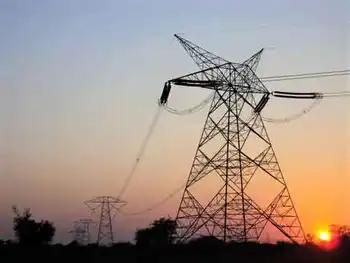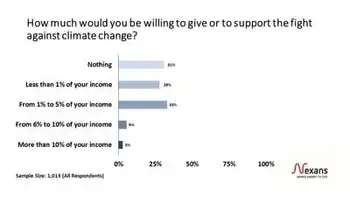Court urged to side with power plants against fish
By Associated Press
Substation Relay Protection Training
Our customized live online or in‑person group training can be delivered to your staff at your location.

- Live Online
- 12 hours Instructor-led
- Group Training Available
Lawyers for the government and electricity producers urged the justices to overturn a lower court ruling that says the Clean Water Act does not let the government pit the cost of upgrading an estimated 554 power plants against the benefits of protecting fish and aquatic organisms when limiting water use.
They argued that for the last 30 years the Environmental Protection Agency has weighed the costs of controlling power plant withdrawals from rivers, streams and other waterways against the benefits of saving more aquatic wildlife in setting technology requirements.
The law already allows such cost-benefit analyses to be performed when facilities discharge pollutants into waterways that could affect human health, the attorneys said.
"There is no reason Congress would want greater protection for fish from intake structures than for people through the discharge of pollutants," said Deputy Solicitor General Daryl Joseffer.
Environmentalists want the decision upheld, an outcome that could prompt the EPA, under a new administration, to require existing power plants to install more costly and protective technology. All new power plants must use closed-cycle cooling, which recycles water using less from waterways to cool machinery.
Richard Lazarus, an attorney representing environmental groups, said that by comparing costs to benefits the EPA has underregulated water intake from power plants.
"EPA has no authority in any circumstance to decide that fish aren't worth a certain amount of cost," he said. Lazarus, however, said that other parts of the law let the agency evaluate the burden on industry.
Maureen Mahoney, who presented the case for power producers including Entergy Corp. and PSEG Fossil LLC, said that if the EPA is not allowed to consider costs it would lead to "irrational results" such as 200-foot cooling towers in historic towns.
Some justices expressed skepticism about whether it was possible to weigh the cost of buying and installing new cooling water intake structures against the value of fish and other aquatic organisms.
"The difficulty that I have is if you are going to apply... a cost benefit analysis, I'm not sure how it would work," said Justice David Souter. "Are a thousand plankton worth a million dollars? I don't know."
The nation's power plants use billions of gallons of water from rivers and other waterways each year to cool their facilities. But the flow of water can smash fish against grills and screens and smaller aquatic organisms can get sucked into the system itself.
In July 2004, the EPA allowed the industry to forgo the most expensive solution, installing closed-cycle cooling systems that would cost billions of dollars and prompt the shutdown of some power plants.
An EPA analysis cited by Justice Stephen Breyer found that requiring all facilities to use the technology would require building 20 more 400-megawatt power plants to replace the electricity used to operate it. The same analysis also said electricity costs could rise by 2.4 percent to 5.3 percent.
Breyer said the EPA should be able to take into account the environmental costs and benefits, as long as it doesn't overreach.
"Why not let sleeping dogs lie? Let the agency take it into account the way it's done it to prevent absurd results, but not try to do it so that it's so refined you can't even take account of what a fish is worth unless they happen to be one of the 1.2 percent that goes to market," he said.
The EPA rule allowed companies operating older plants to decide how to comply with the Clean Water Act by selecting among more economical options.
The 2nd U.S. Circuit Court of Appeals in January 2007 ruled against the companies and government, saying the Clean Water Act does not allow cost to be used when deciding what technology would best minimize environmental impacts.











